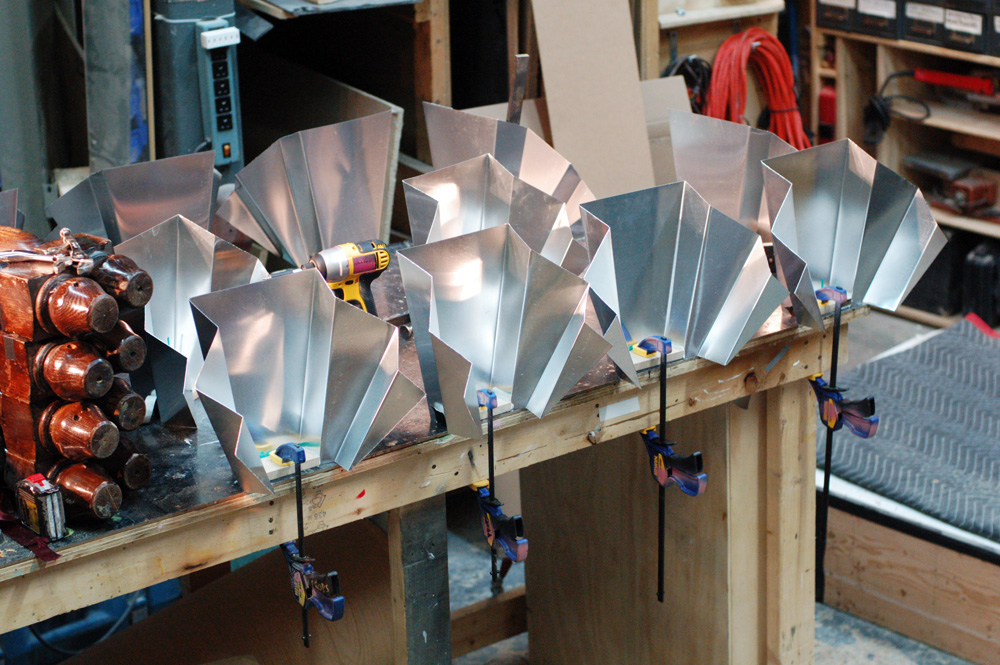It's like doing improv. If everyone's having a good time nobody stops to think about that there isn't an actual elephant onstage stampeding all over everyone. The moment you show an actual elephant it's
clear you've gone to some effort to make it realistic, now everyone latches onto how funky your elephant looks and that it doesn't really resemble an actual elephant in shape or proportion and that it's kind of weird you went to all that trouble for something that wasn't animated enough to do the motions of actually stampeding or even walking an elephant wheeled out on
caster boards is my quite the artistic liberty.
I've seen 100W light bulbs in cheapy screw-down bases strung together with 14/2 or 16/2
zip cord. Takes a little
bit of work to
wire it up so it doesn't scare the facilities guys or expose anyone to a hazard but it's about as inexpensive as it gets. Then you just need the reflectors which are cheaper to fab yourself then they are to buy pre-made.
If budget and tooling is limited, this design is much easier to work with than the more acclaimed clamshell variety. You have to coat the inside with
mylar or other reflective paint/film to make it spray light out effectively.
If you do want the clamshells, it would probably end up looking something like this:
Don't thank me yet though. The less you put into the visuals, the harder it can be a for a cast to dig their heels into the show. You may have to
throw some stuff at them or heckle them or whatever during rehearsals to get them to be more emphatic, gesticulate wildly, project their voices, and flirt with the audience. They don't have a rock to hide under anymore if their acting doesn't rise to that occasion. Getting into costumes/makeup a little earlier in the rehearsal process can help alleviate that though.
Under limited budget, I would focus on costumes/makeup,
footlights, a
level 2 steps down off the front of the
stage,
props, the gags within the show, and bang-for-the-buck scenery that maybe you can spin around to give visual hints to the changing scenes. Pretty much in that order of priority. And most importantly, the acting, choreography, and audio/vocals/music! Nothing else matters if your audience can't hear and understand your performers. Their ability to make a meaningful connection with the audience is handicapped if they aren't loud enough and articulate.
The less scenery you do, probably the more
props you have to do such as furniture, banners, benches, dinnerware,
etc. Part of giving the performers a little more impact without heavy scenery is giving them smaller things they can interact with and a lot of that stuff you can probably borrow from someone. You don't need to see a restaurant or a nightclub if you see someone walking around to tables in the front row with a pitcher pouring drinks.
I would also go on a shopping spree to the local party stores or search online. They usually have decor like glitzy
mylar curtains at a pretty low price.






